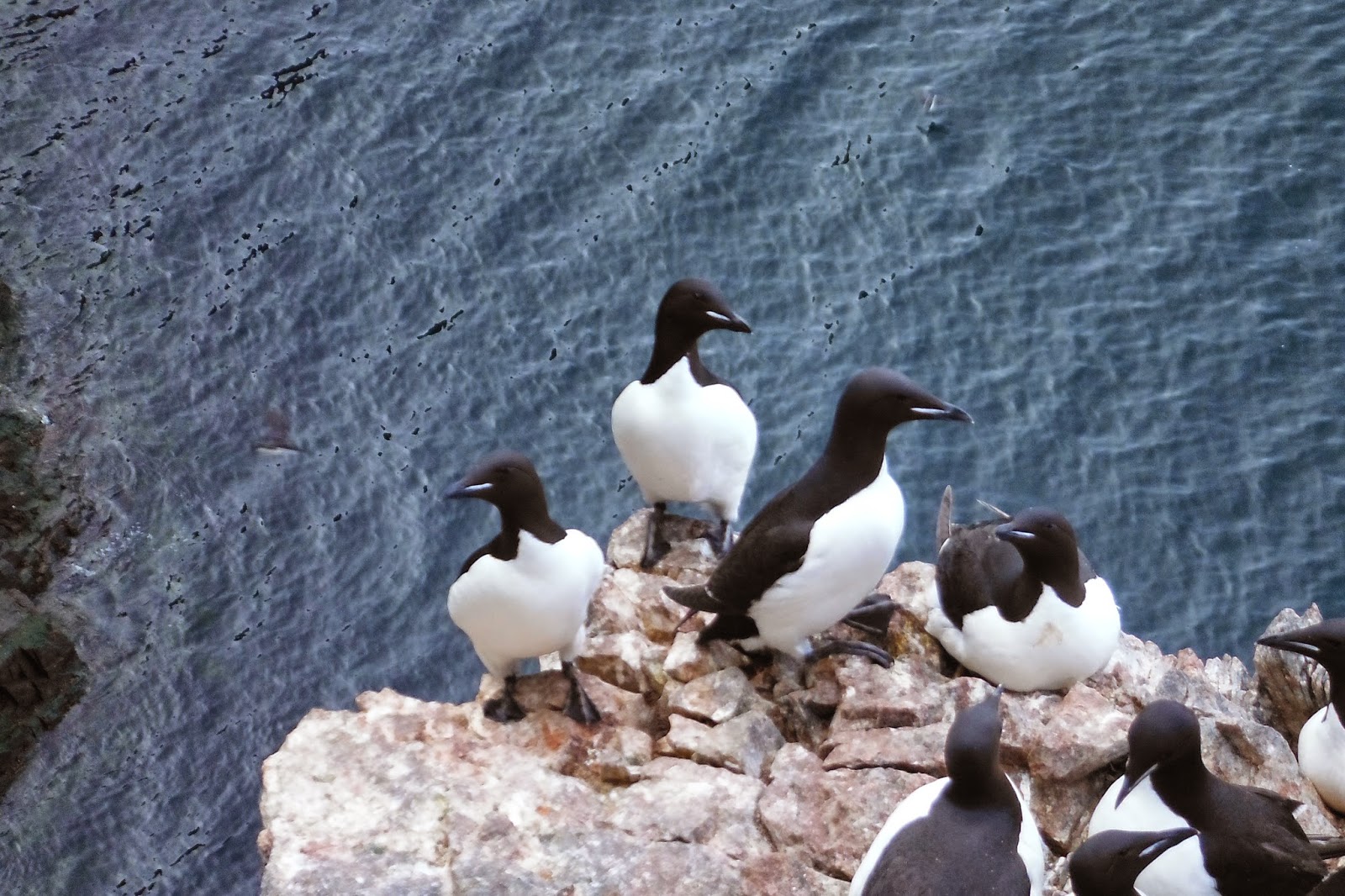After a long winter of seeing cool places, fauna, and flora, and not writing about any of it, I'm back to writing. It's spring, and feels like summer, on my new island of residence. Santa Cruz Island, part of California's Channel Islands, is a beautiful place to be watching spring come. The island is huge, and full of places to explore. It is owned by the National Park Service and The Nature Conservancy, so there are few other inhabitants.
Rain several weeks ago (a week before I arrived) on the steep, rocky slopes has started the process of greening the island up. Many things are still working on putting out all of their leaves, but the change appears rapid. And it is beautiful! There are lots of flowers appearing, and mostly on island endemic species such as Giant coreopsis, Santa Cruz Island Manzanita, two island ceonothus species, and the island morning glory. It's amazing how many species here are endemic to just the Channel Islands, or even to just this island. One of the cutest examples of this, is the island fox. They are tiny (house cat size) and not shy of people. I learned early to not leave anything outside where they can reach, for they are happy to take it away.
My work here is lots of fun. I'm working with another island endemic, the Island Scrub Jay. There are three sites where we are monitoring their behavior and reproductive success. One of these sites is new this year, so we are also spending time capturing and banding these new study birds. A final part of the project is radio tracking last year's hatch-year birds. This is a time-consuming, but exciting process. I have been doing radio tracking the last two days, and my hikes after these birds have taken me on long hikes into steep and remote valleys. It's really fun, and a cool way to be forced to explore all parts of their territories.
Afternoons are mostly free, so there is lots of time for more exploring. Today we jumped in the ocean (my first Pacific swimming in a while) and then sat on the beach and watched for seabirds. It seems like every bird I see here is a new species for me (I think twenty new birds so far...). There is much more exploring to do in the next few months here, and many more adventures, sightings, and reflections on this unique island to write about.


















